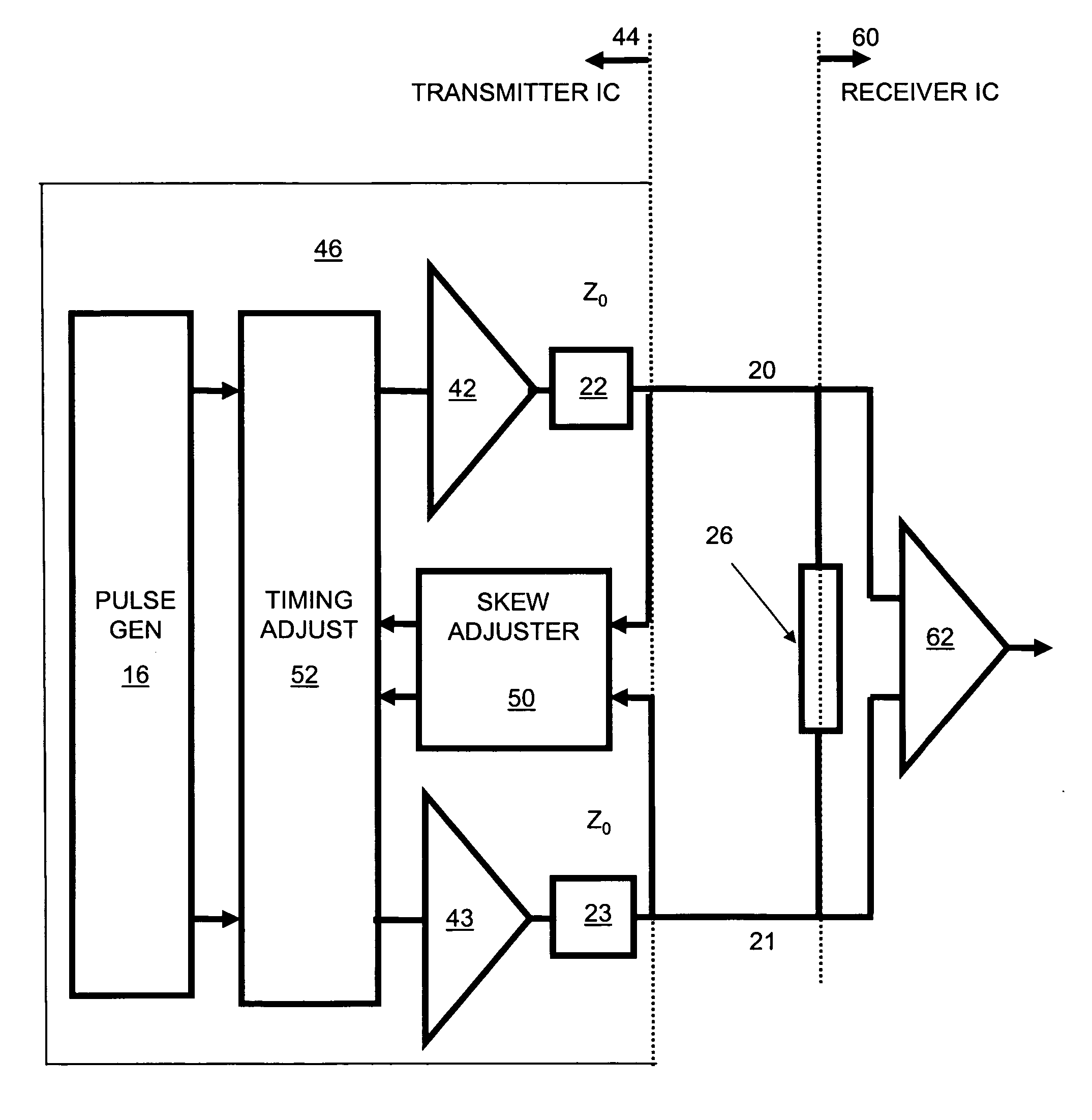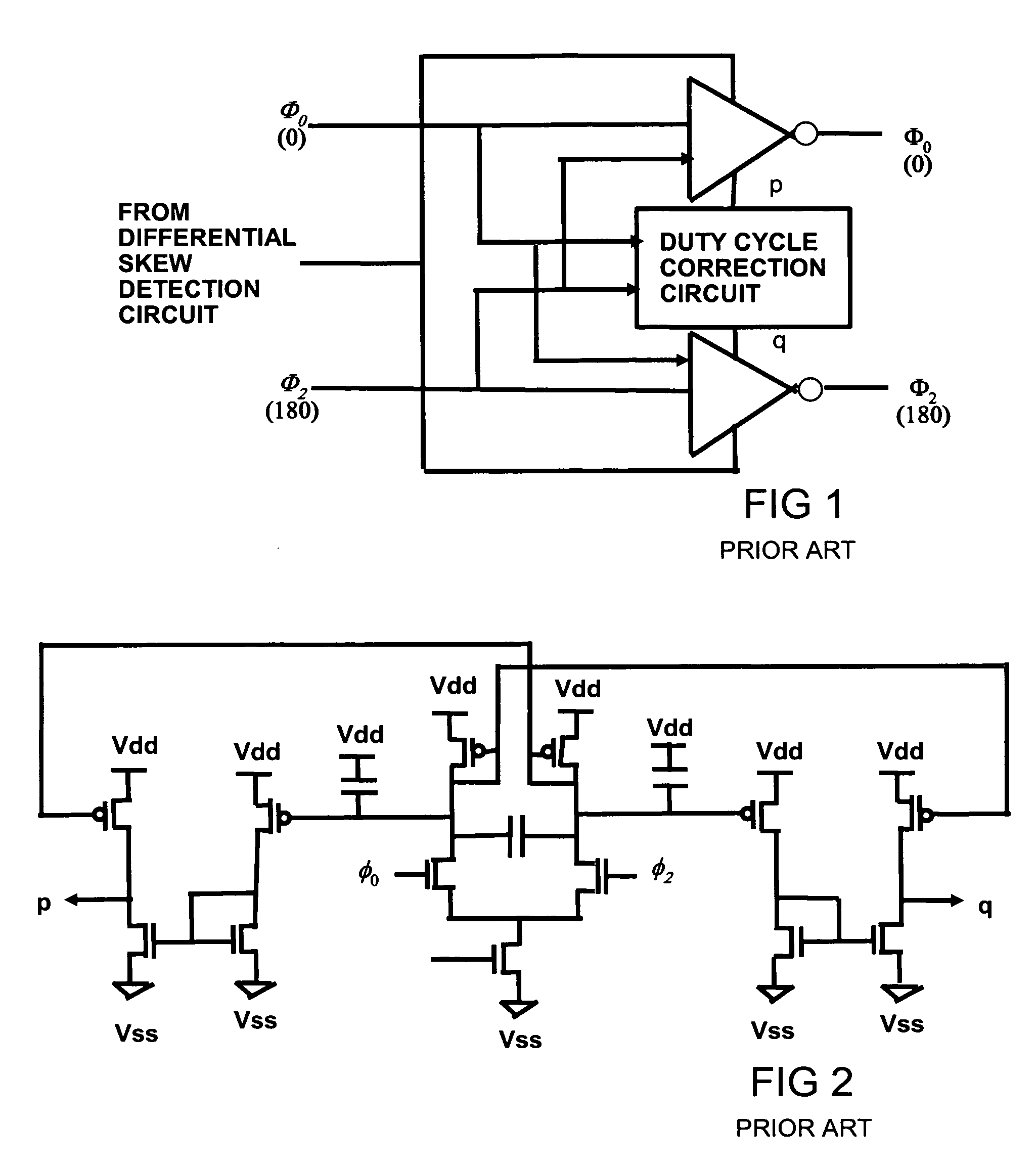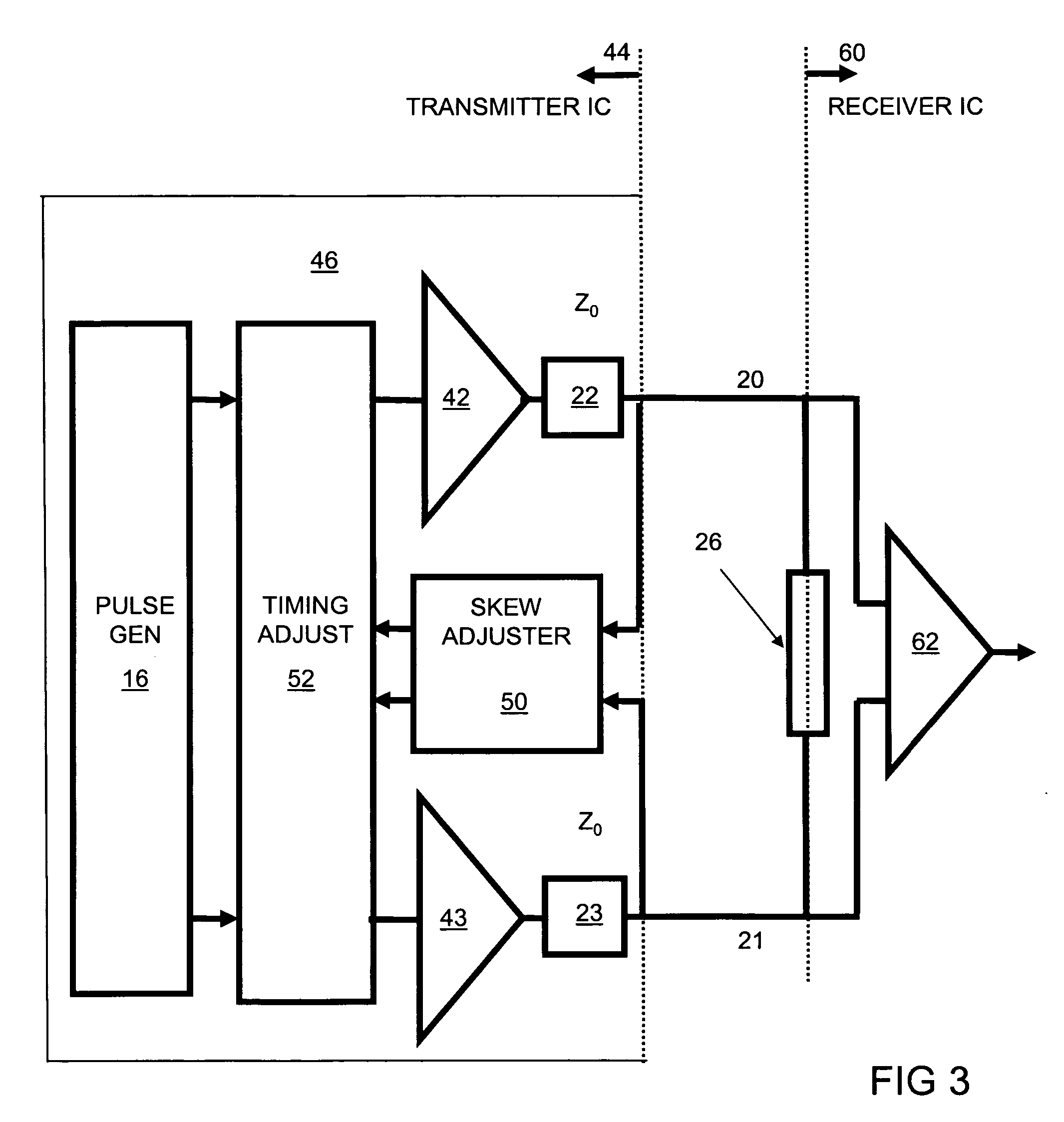Automatic skew correction for differential signals
a technology of differential signals and skew correction, applied in the field of automatic skew correction of differential signals, can solve problems such as skew in signals, and achieve the effect of reducing skew and reducing skew
- Summary
- Abstract
- Description
- Claims
- Application Information
AI Technical Summary
Benefits of technology
Problems solved by technology
Method used
Image
Examples
Embodiment Construction
[0035]FIG. 3 depicts a transmitter IC 44 for transmitting a differential signal to a receiver IC 60 via a differential lane formed by a pair of lines 20 and 21. The receiver ends of the lines 20 and 21 are connected to a termination 26, and a differential input circuit 62 of receiver IC 60. Complementary edges of the differential signal on lines 20 and 21 ideally should arrive concurrently at receiver 60, but due to differences in lines 20 or 21, the complimentary edges can arrive at different times. When the timing of the differential signal arriving at receiver 60 exhibits such skew, termination 26 reflects the signal edges back toward transmitter 44.
[0036] Transmitter IC 44 includes a skew correction system 46 in accordance with the invention that monitors the signal reflections returning to transmitter 44 to detect any skew in the differential signal input to receiver IC 60 and adjusts the relative timing of the complementary signal edges as they depart transmitter IC 44 to eli...
PUM
 Login to View More
Login to View More Abstract
Description
Claims
Application Information
 Login to View More
Login to View More - R&D
- Intellectual Property
- Life Sciences
- Materials
- Tech Scout
- Unparalleled Data Quality
- Higher Quality Content
- 60% Fewer Hallucinations
Browse by: Latest US Patents, China's latest patents, Technical Efficacy Thesaurus, Application Domain, Technology Topic, Popular Technical Reports.
© 2025 PatSnap. All rights reserved.Legal|Privacy policy|Modern Slavery Act Transparency Statement|Sitemap|About US| Contact US: help@patsnap.com



